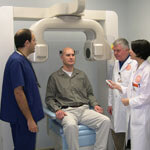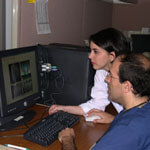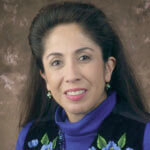Harlingen (May 4, 2004) – Internal medicine residents at the Regional Academic Health Center (RAHC) Medical Education Division have begun presenting clinical research at national and regional meetings in the internal medicine field – a positive development that is aided by a $1.5 million gift from The Robert J. and Helen C. Kleberg, Jr. Foundation.
The RAHC Medical Education Division is the Harlingen campus of The University of Texas Health Science Center at San Antonio.
The Kleberg Foundation last year donated the funding to establish the Kleberg Medical Scholars Program to attract the best and brightest medical residents to the RAHC. Seven RAHC residents are conducting clinical research projects supported by $10,000 stipends from the Kleberg Medical Scholars Program. Another portion of the Kleberg grant is coordinated by Valley Baptist Medical Center, the RAHC’s teaching hospital in Harlingen. VBMC receives $10,000 per Kleberg Scholar per year to support the Kleberg Scholars’ research programs.
Two Kleberg Scholars are among the five RAHC residents invited to make presentations at the American College of Physicians regional associates meeting in San Antonio, said James F. Hanley, M.D., clinical professor of medicine at the Health Science Center and director of the internal medicine residency program at the RAHC. Another Kleberg Scholar, James W. Castillo, M.D., was invited to present an abstract at the Society of Hospital Medicine’s Seventh Annual Meeting in New Orleans April 20-21. Dr. Castillo presented a clinically rare case of liver perforation in a patient with pancreatitis.
The Kleberg Scholars program, along with rock-solid academic relationships that exist between the RAHC, Valley Baptist Medical Center and Su Clinica Familiar, result in a greatly strengthened RAHC internal medicine residency program. Many of the projects utilize patients from Su Clinica. “When you have an environment that focuses on research, it becomes a more common practice to take clinical observations, write them up and present them at important meetings,” Dr. Hanley said. “We have a substantial change in the number of meeting presentations made by our residents in one year. We are still in the infancy of our program, but by and large we have moved away from the starting gate, and that is due to the working relationship of the entities to do these projects, as well as the fact that the Kleberg funds have allowed the residents to take on these projects.”
The Kleberg Medical Scholars will present their findings at an evening session June 2 at the RAHC Medical Education Division building, 2102 Treasure Hills Blvd. The meeting is open to RAHC faculty and interested health care professionals.
The internal medicine program was inaugurated in July 2002 with eight residents. The program now has 12 residents, including the seven Kleberg Scholars. Additional Kleberg Scholars will be selected in coming weeks.




